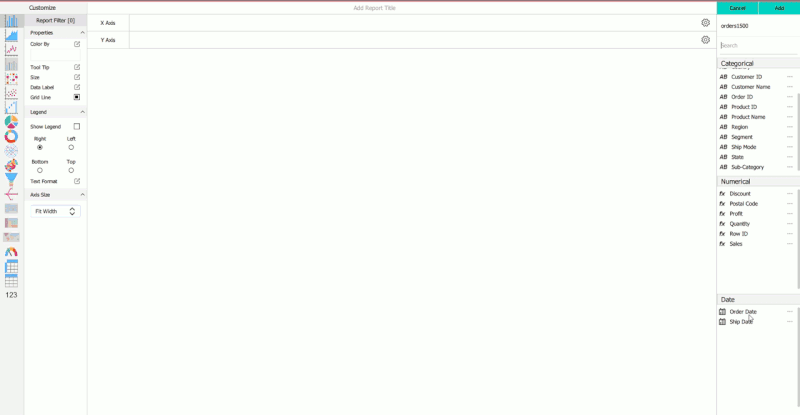Implementing data analytics in the supply chain will help you make better data-driven decisions. Organizations treat each component of the supply chain differently to mitigate risk. As a result, they treat the components as individual parts. There are 5 components in the supply chain – Plan, Source, Make, Deliver, and Return
The supply chain decides the impact on customer experience and retention. It covers every part of the product starting from manufacturing to end delivery to the customer. Analytics help businesses strengthen the integrity of the process giving them more power to meet customer demand.
Overview of Data Analytics in Supply Chain
The supply chain covers vast processes including the purchase of raw materials, manufacturing, inventory, warehouse, logistics, and the final delivery of the product. Each component of the chain is connected to another. If a problem occurs in one, the entire chain gets disrupted. As a result, it’s important to monitor the entire chain.
Data analytics is the process of uncovering important data and finding the right patterns useful for the company. Each component of the supply chain generates huge amount of data. This data becomes useless unless Insights are generated from them and shared within the organization.
Therefore, modern business intelligence tools use data visualization to provide visible data to business owners. With proper data visualization, better data-driven decisions can be made by the team.
This helps in the overall profitability of the company.
Types of Analytics
There are multiple types of analytics.
Descriptive analytics
It collects data from data sources to give information about the trends. It’s great for an overview of the system. Descriptive analytics doesn’t go in-depth for better insights. It’s useful to get an overview of your supply chain in one go.
Predictive analytics
It’s usually used for risk mitigation. It combines machine learning and data mining with historical data to predict future outcomes. When one of the components of the supply chain is not performing efficiently, predictive analytics is used to get the estimation of losses.
Prescriptive analytics
It uses multiple data sources to provide you with the best next move for your business. The data usually includes available resources, historical data, performance, and other similar factors. After digging deep into all, the business intelligence will recommend ways to save time and effort.
Cognitive analytics
Cognitive analytics is one of the most advanced data analytics techniques for supply chains. It provides human-like intelligence. With machine learning (deep learning) and artificial intelligence algorithms, analytics help you to find hidden patterns in the data. One can use it for decision-making, customer behavior, optimization, productivity enhancement, and a lot more.
Why data analytics should be infused for every component?
The supply chain follows the rules of dominos. If one problem occurs in one of the components, the result is affected a lot. It’s one of the important parts of the business. Therefore, a single point of failure can cause massive problems.
Efficiency and Cost Savings
The core reason to implement data analytics in every component of your supply chain is to increase efficiency. Even a simple free business intelligence software can help you get the proper analytics of your warehouse. Proper data visualization from warehouses and logistics alone can save you a lot of time.
Further, when you have data from multiple data sources, you will get actionable insights. Prescriptive analytics when combined with predictable analytics can uncover hidden insights to optimize your system. With this, you can minimize the cost and mitigate the risk.
Risk Mitigation
Data visualization gives them a comprehensive view of the chain. With the right amount of data and insights, it becomes easier to find the risks and specific points of disruption. For instance, if one of the raw materials has a shortage in the market, your entire supply chain will be disrupted.
Data analytics helps you determine the losses. Cognitive analytics will also allow you to minimize the risks here. The free business intelligence software is not capable of this.
Customer Retention
One of the crucial benefits of infusing data analytics in every component is measuring delivery performance. By analyzing data from all the sources for each component of the supply chain, you are leaving no room for error, giving you insights into how well you are performing in meeting customer demand and what areas need to be improved.
Accuracy and Strategy
When you are dealing with multiple products across various regions, it’s hard to keep track of all the events happening. If a specific product has an increase in demand, you might not even notice if your portfolio is too big.
Data analytics allow you to find the products ahead of the surge. The accuracy of AI prediction will help you serve better. You can create a proper strategy with historical data and suggestions from the software.
Key Features of Data Analytics
There are 5 major key features to implementing data analytics in all the components.
#1 Connected
The data sources are multiple. The software collects data from ERP, CRM, B2B tools, your company’s web apps, social media, IoT devices, and other possible sources.
#2 Collaborative
Modern software is cloud-based. Therefore, authorized employees can access data anywhere and anytime.
#3 Security
Modern business intelligence tools are cyber-aware. So, the data is hack-proof. You can give permission-based access to your employees as well.
#4 Cognitive
AI will help you make better decisions. The self-learning supply chain data analytics automate most of your work giving you an effort-free solution.
#5 Comprehensive
As the title says, infusing data analytics in all the components will help you understand the system better. It should be accurate and scaled in real-time.
Final Step: Implementing Grafieks.
The final step is to infuse data analytics in every component of the supply chain and give everyone in the organization power to get Insight from the data by themselves.
Grafieks is an easy-to-use Self-Service Business Intelligence platform that allows users to quickly and easily extract meaningful insights from data. With Grafieks, anyone can connect to their data, build data models, and build reports independently, with minimal IT support.
Ready to see what Grafieks can do for your organization? Check out the pricing page and get started with the Free version of Grafieks.


